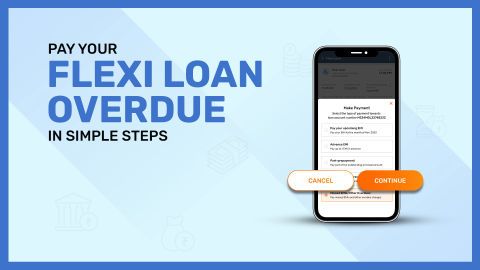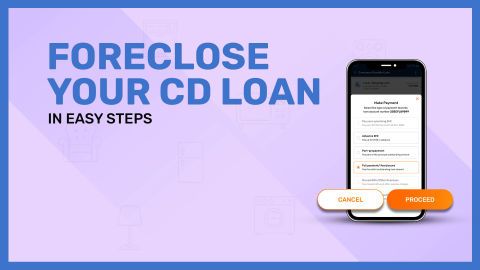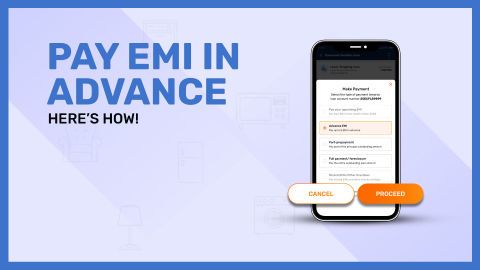Unlike prepayment, where you repay the loan in full before the tenure ends, part payment enables borrowers to make payments in chunks, offering financial relief while keeping liquidity intact. However, lenders may impose part payment charges, which vary based on the loan provider’s policies. These charges are typically calculated as a percentage of the amount paid or a fixed fee. Understanding these charges is crucial before making a part payment to ensure it aligns with your financial goals. Let’s explore how part payment charges work for gold loans in detail.
How part payment charges work for gold loans?
Gold loans are a popular borrowing option for individuals who need quick funds by pledging gold as collateral. They offer flexible repayment options, including part payment, which allows borrowers to pay off a portion of the outstanding principal before the loan tenure ends. This helps reduce the interest burden and lowers the remaining loan balance. However, lenders may impose part payment charges, and understanding these charges is essential before making any repayment.What is part payment in a gold loan?
Part-payment refers to making a lump sum payment towards the principal amount of a gold loan before the scheduled EMI (Equated Monthly Installment) or tenure completion. Unlike full prepayment, which closes the loan entirely, part payment only reduces the outstanding balance, leading to lower interest charges and a shorter repayment period.How do part payment charges work?
Many banks and NBFCs (Non-Banking Financial Companies) levy part payment charges as a fee for reducing the loan principal before the agreed schedule. These charges vary based on the lender’s policies and the amount being paid. The fee can be:A fixed percentage of the part payment amount (e.g., 1-3% of the payment made).
A fixed amount per transaction, regardless of the payment size.
No charges at all, in some cases, depending on the lender’s policies.
Factors affecting part payment charges
Loan provider’s policies – Each financial institution has its own rules regarding part payment and associated charges. Some lenders offer zero or minimal fees, while others impose significant charges.Loan tenure – Shorter loan tenures may have stricter part payment policies compared to longer tenures.
Frequency of part payments – Some lenders may allow multiple part payments without extra fees, while others may impose limits on the number of times part payments can be made.
Loan amount and interest rate – Higher loan amounts might have different part payment policies than smaller loans, and the interest rate structure may also affect repayment terms.
Factors affecting gold loan part payment charges
Lender’s policies – Different banks and NBFCs have varying policies on part payment charges. Some may offer part payment without extra fees, while others may charge a percentage of the amount repaid.Loan tenure – The repayment period plays a role in determining part payment charges. Shorter tenures may have stricter charges, while longer tenures might provide more flexibility.
Loan amount – Higher loan amounts often come with more stringent part payment rules, whereas smaller loans may have lenient repayment options.
Type of gold loan – Some gold loans have fixed interest rates, while others have floating rates. Part payment charges can vary based on these structures.
Interest rate structure – If the loan has a higher interest rate, part payments can reduce the burden, but lenders may charge a fee to compensate for the lost interest income.
Frequency of part payments – Some lenders allow multiple part payments, while others may impose a limit on how often you can make these payments.
Time of payment – Charges may differ based on when you make the part payment during the loan tenure. Early-stage part payments may attract higher fees compared to those made later.
Promotional offers & waivers – Some lenders offer temporary waivers on part payment charges as a part of special promotions or loyalty programs.
Pros and cons of part payments on gold loans
Pros:
Reduces interest burden – By repaying a part of the principal early, you can significantly lower the total interest payable.Shortens loan tenure – Making part payments allows you to repay the loan faster, reducing financial stress.
Improves credit score – Regular part payments show responsible credit behaviour, positively impacting your credit score.
Lowers EMI amount – If your lender allows EMI recalculation after part payment, your monthly instalment may reduce.
Better financial flexibility – You can clear a part of your debt while keeping some liquidity for other expenses.
Cons:
Part payment charges – Some lenders impose fees on part payments, which may offset the benefits of reducing interest.Liquidity constraints – Using your savings for part payment might limit funds available for emergencies.
Restrictions on part payment – Certain lenders have limitations on the frequency and minimum amount of part payments.
No immediate benefit if interest is prepaid – If your gold loan follows a pre-computed interest structure, part payments may not reduce your interest liability significantly.
How to calculate part payment charges for gold loan?
Check lender’s policy – Review the terms and conditions to see if part payment charges are a fixed fee or a percentage of the payment.Calculate the charge percentage – If a lender charges 2% on the part payment amount, and you pay ₹50,000, the fee would be:
₹50,000 × 2% = ₹1,000
Compare different loan scenarios – Some lenders reduce interest after part payment, while others keep EMIs the same but reduce tenure.
Use online calculators – Some financial institutions provide gold loan part payment calculators for quick estimation.
Tips to minimise part payment charges
Choose a lender with low or no charges – Compare various banks and NBFCs to find the most cost-effective option.Plan part payments wisely – Instead of multiple small payments, make one or two larger payments to minimize cumulative charges.
Negotiate with the lender – Some lenders may waive part payment fees for long-term or loyal customers.
Opt for flexible repayment plans – When applying for a gold loan, choose lenders that allow free or low-cost part payments.
Check for promotional waivers – Look for seasonal offers where lenders waive part payment fees.
Use a gold loan quick payment option – Some lenders provide digital payment options with lower processing fees. Learn more about gold loan quick payment.
Common mistakes to avoid in part payments
Not checking the terms & conditions – Overlooking part payment charges can lead to unexpected costs.Making frequent small payments – Multiple payments may accumulate higher charges compared to a single lump sum.
Using emergency funds for part payment – Always maintain liquidity for urgent financial needs.
Assuming all lenders allow part payments – Some institutions do not provide part payment facilities or impose strict conditions.
Ignoring loan top-up options – Instead of part payment, consider a Gold Loan Top-up if you need additional funds.
Delaying Payments Until the Last moment – Early part payments reduce interest significantly, so it's better to pay as soon as possible.
Not using a loan calculator – Failing to check how much you can save before making a part payment can lead to inefficient financial decisions.
By understanding part payment charges, planning your repayments, and avoiding common mistakes, you can optimize your gold loan repayment and reduce costs effectively.




